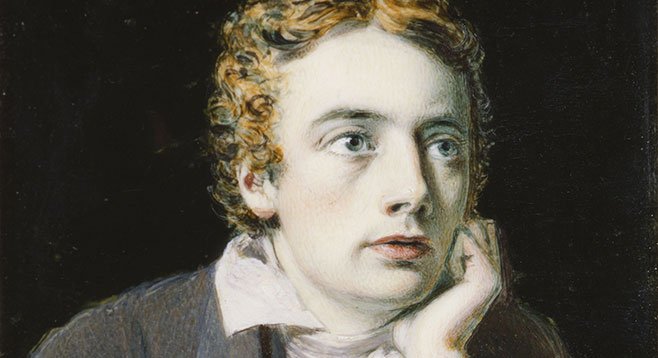 Facebook
Facebook
 X
X
 Instagram
Instagram
 TikTok
TikTok
 Youtube
Youtube

The English Romantic poet John Keats was born on October 31, 1795, in London. His father, a livery-stable keeper, died when Keats was 8 and his mother died of tuberculosis when he was 14. In his late teens he met Leigh Hunt, an influential editor who published his sonnets “On First Looking into Chapman’s Homer” and “O Solitude.” Hunt introduced Keats to a circle of writers that included the poets Percy Bysshe Shelley and William Wordsworth. The group’s influence enabled Keats to see his first volume published in 1817. His book-length poem Endymion appeared the following year but was attacked by several critics. A review in the influential magazine Blackwood’s pronounced the poem nonsense and recommended that Keats give up poetry. No doubt these reviews affected him greatly. While nursing his tubercular brother, Keats met and fell in love with a woman named Fanny Brawne. In the fall of 1819 Keats contracted tuberculosis, and in July 1820, he published his third volume of poetry, a volume containing his greatest poetry: “Ode on a Grecian Urn,” “Ode on Melancholy,” and “Ode to a Nightingale,” a collection that was praised by the important critics of the time. Keats continued a correspondence with Fanny Brawne, but on his doctor’s suggestion that he seek a warm climate for the winter, Keats went to Rome with his friend, the painter Joseph Severn, and died there of tuberculosis on February 23, 1821, at the age of 25. The portrait of Keats above is by Joseph Severn.


The English Romantic poet John Keats was born on October 31, 1795, in London. His father, a livery-stable keeper, died when Keats was 8 and his mother died of tuberculosis when he was 14. In his late teens he met Leigh Hunt, an influential editor who published his sonnets “On First Looking into Chapman’s Homer” and “O Solitude.” Hunt introduced Keats to a circle of writers that included the poets Percy Bysshe Shelley and William Wordsworth. The group’s influence enabled Keats to see his first volume published in 1817. His book-length poem Endymion appeared the following year but was attacked by several critics. A review in the influential magazine Blackwood’s pronounced the poem nonsense and recommended that Keats give up poetry. No doubt these reviews affected him greatly. While nursing his tubercular brother, Keats met and fell in love with a woman named Fanny Brawne. In the fall of 1819 Keats contracted tuberculosis, and in July 1820, he published his third volume of poetry, a volume containing his greatest poetry: “Ode on a Grecian Urn,” “Ode on Melancholy,” and “Ode to a Nightingale,” a collection that was praised by the important critics of the time. Keats continued a correspondence with Fanny Brawne, but on his doctor’s suggestion that he seek a warm climate for the winter, Keats went to Rome with his friend, the painter Joseph Severn, and died there of tuberculosis on February 23, 1821, at the age of 25. The portrait of Keats above is by Joseph Severn.
Comments